Tech: Inside Giant's Taiwan bike factory, part four
Painting, decaling, and building up frames for bicycle shops worldwide
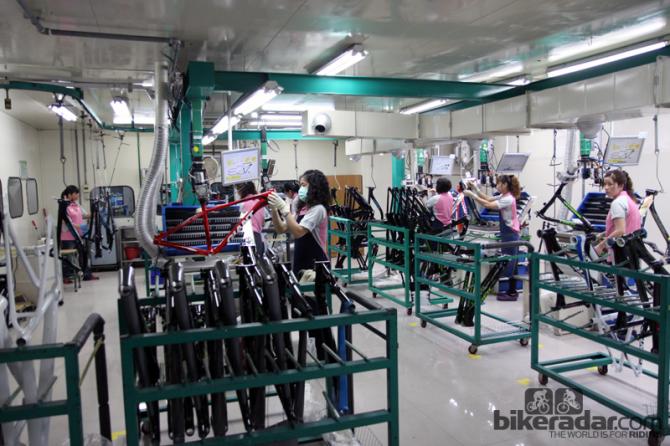
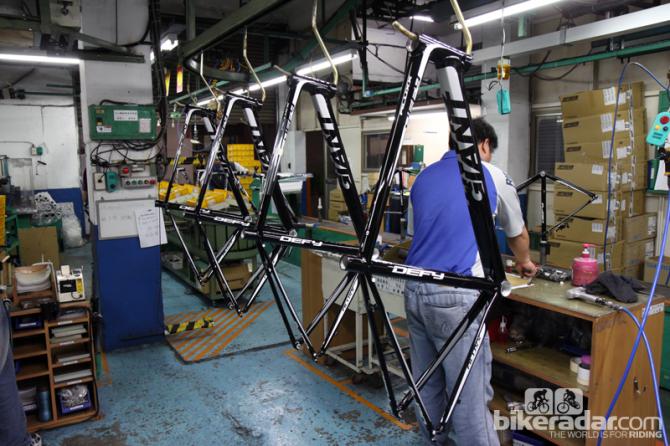
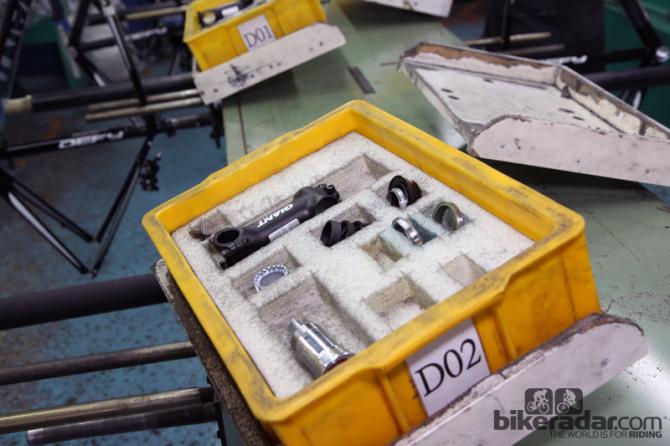
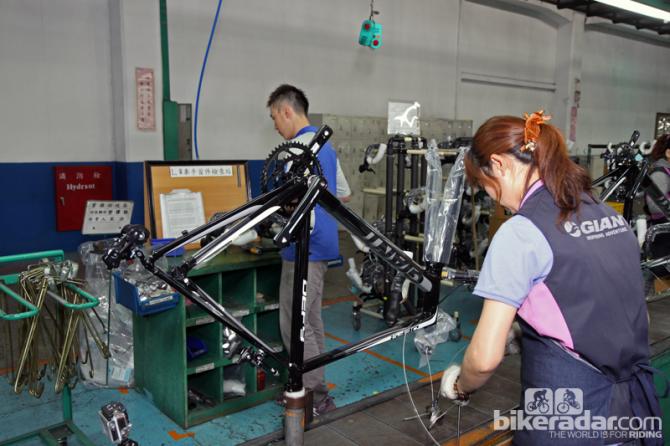
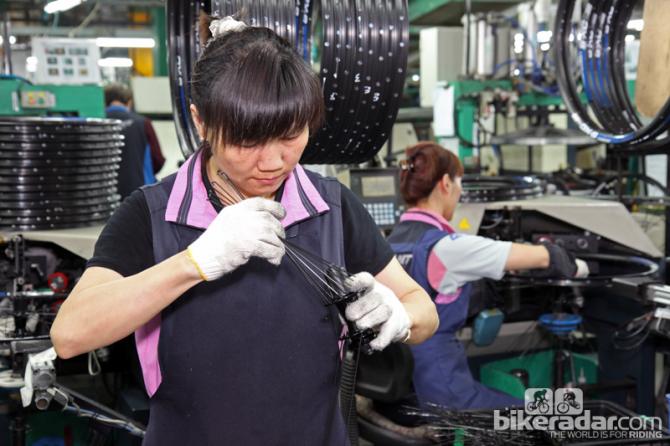
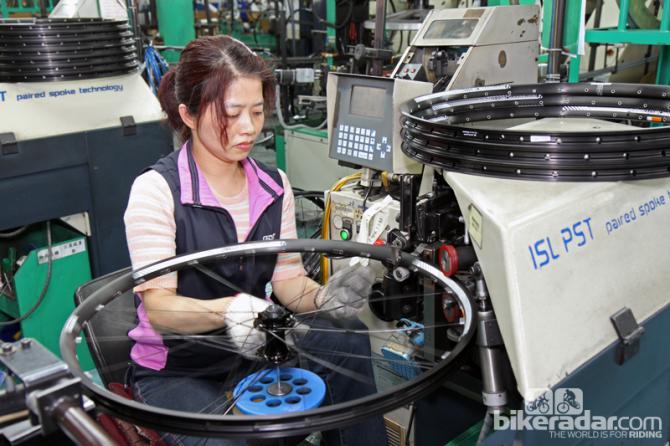
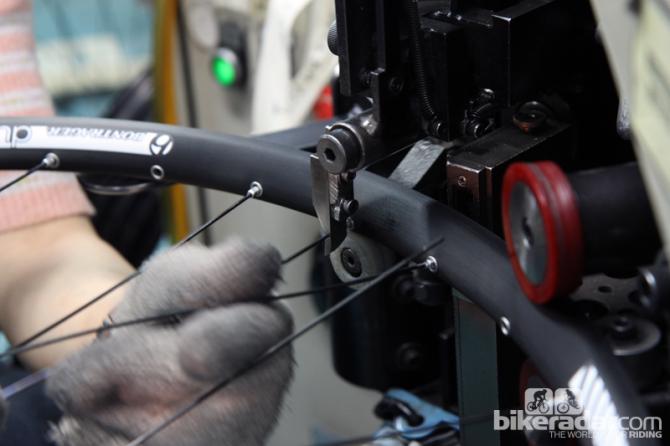
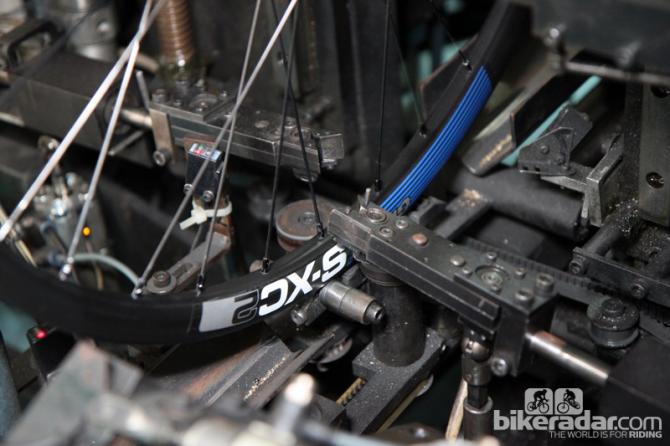
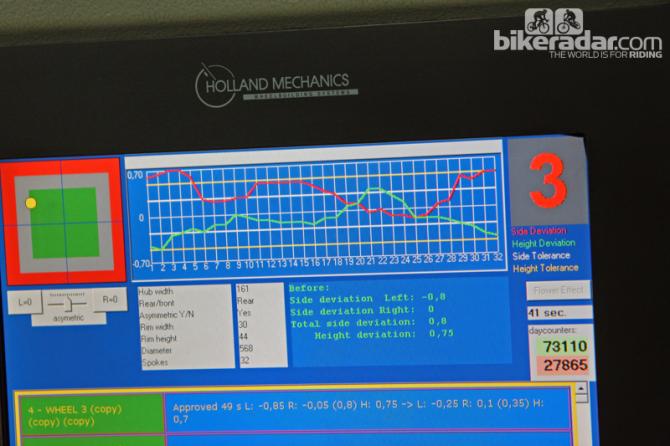
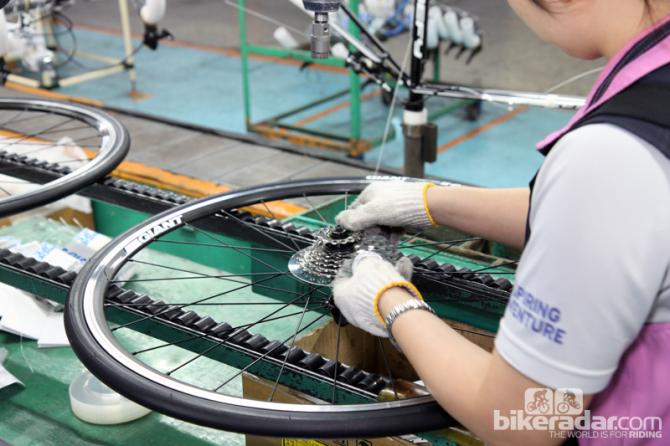
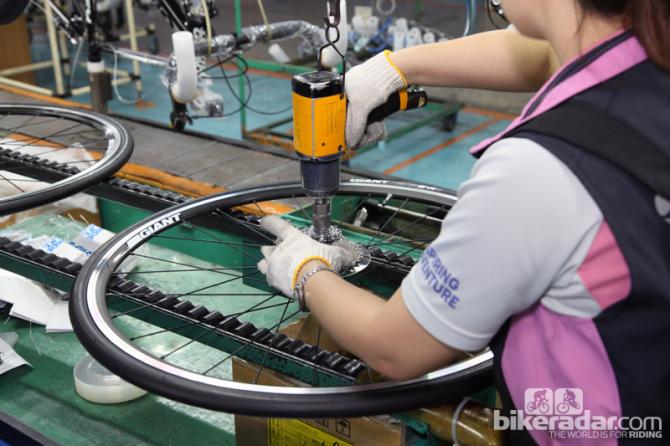
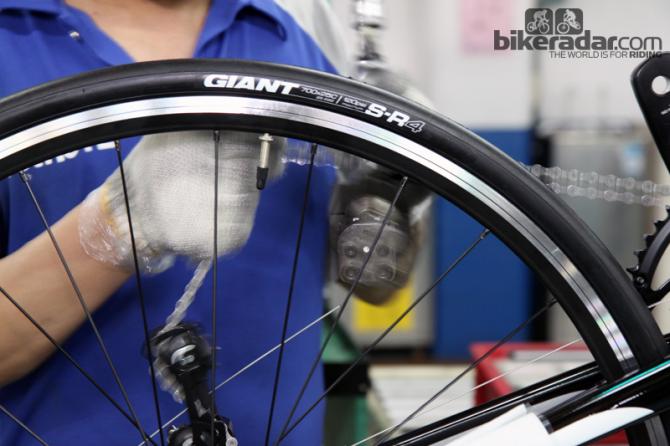
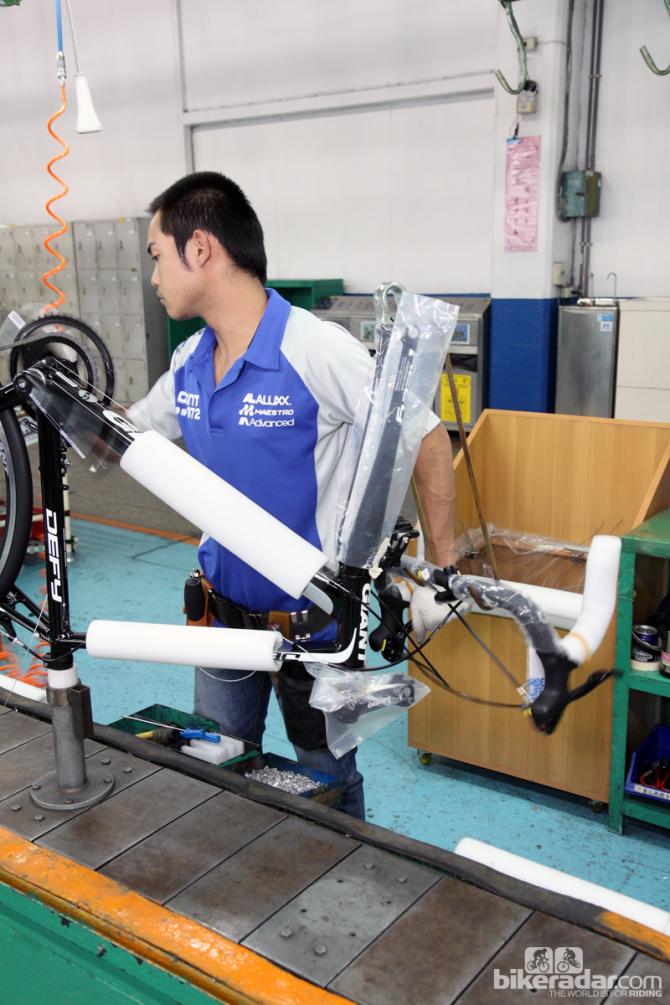
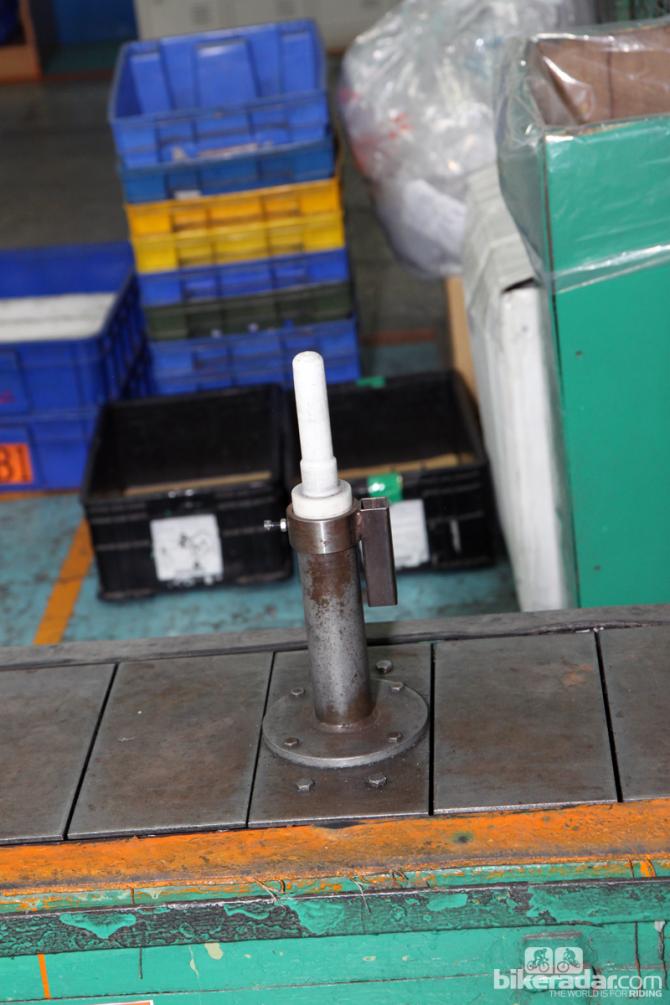
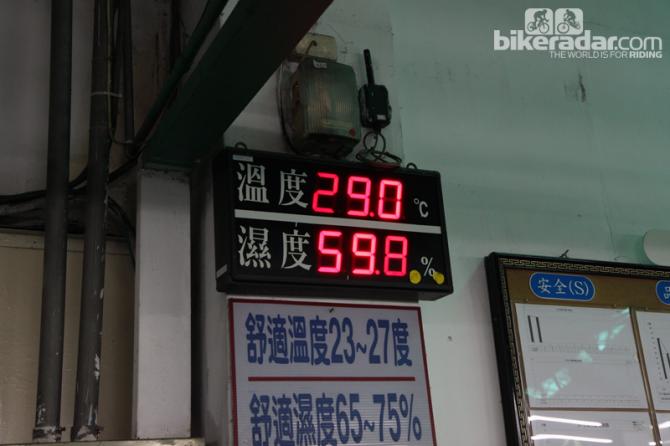
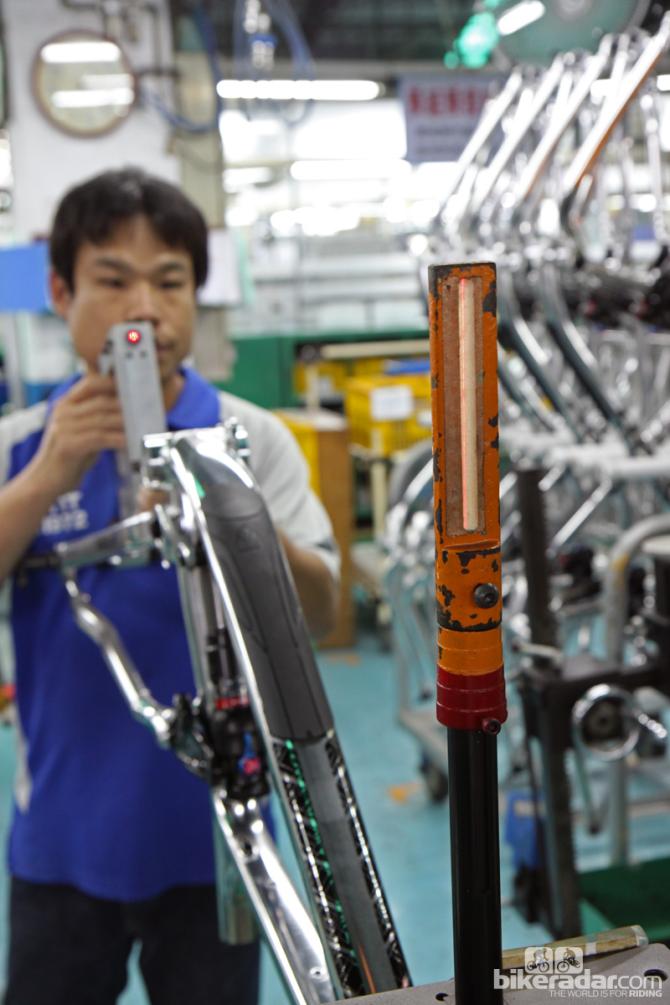
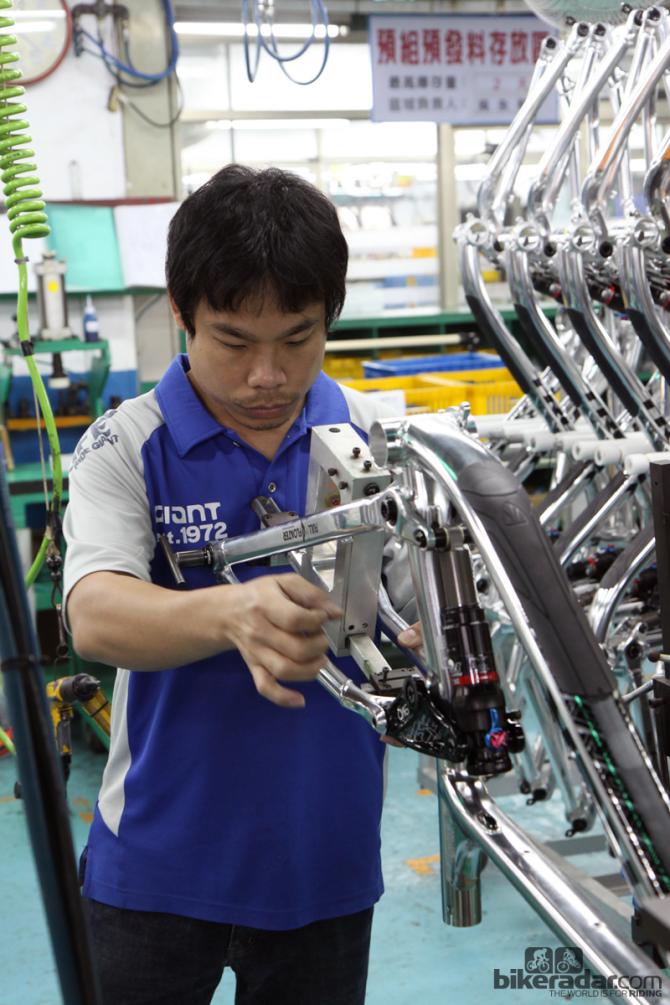
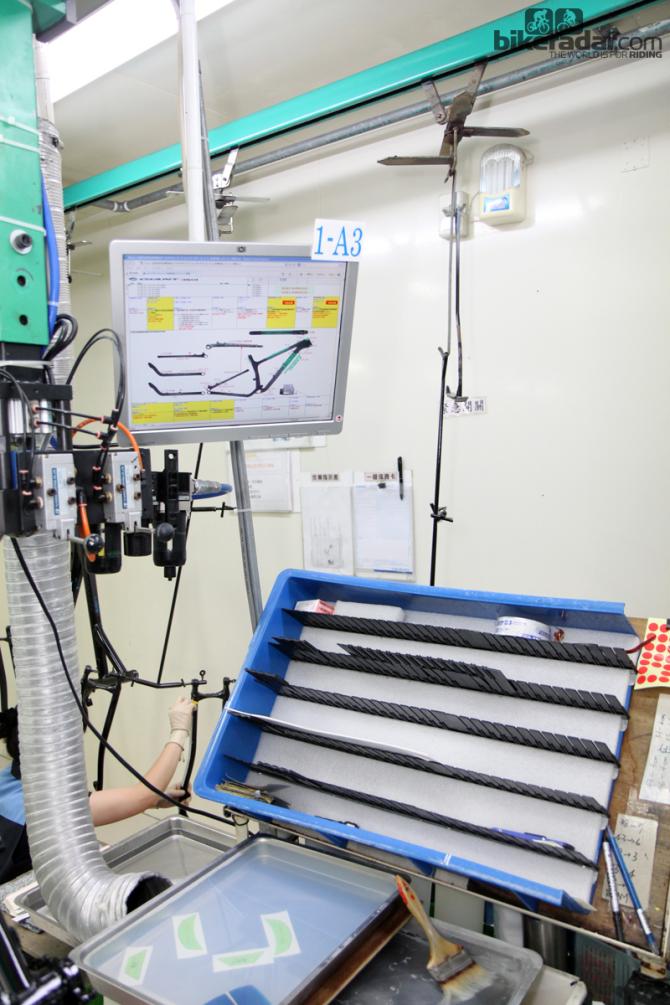
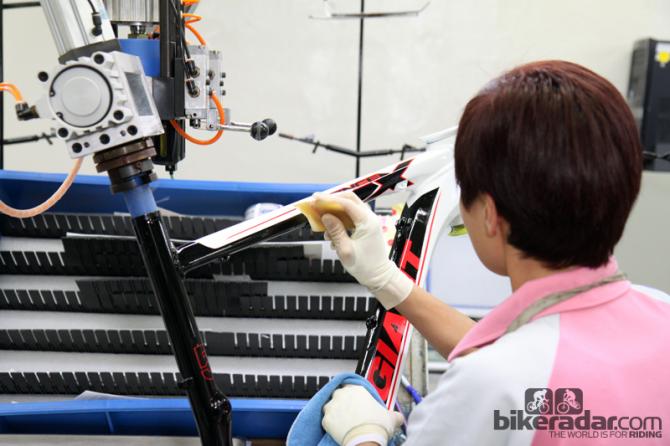
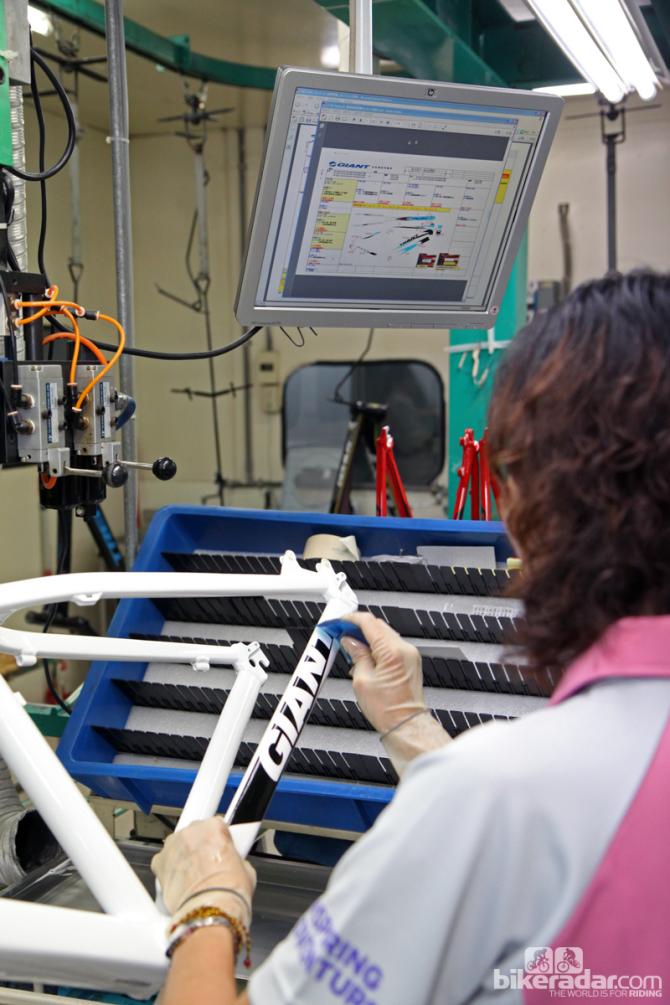
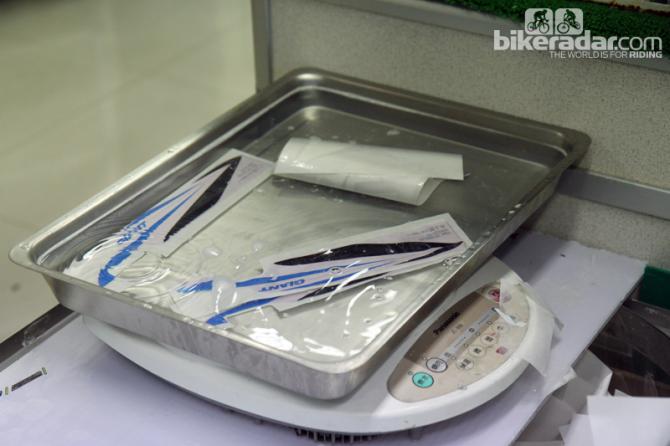
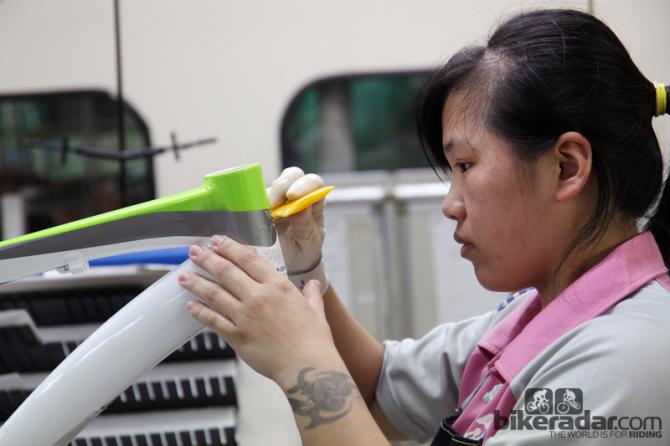
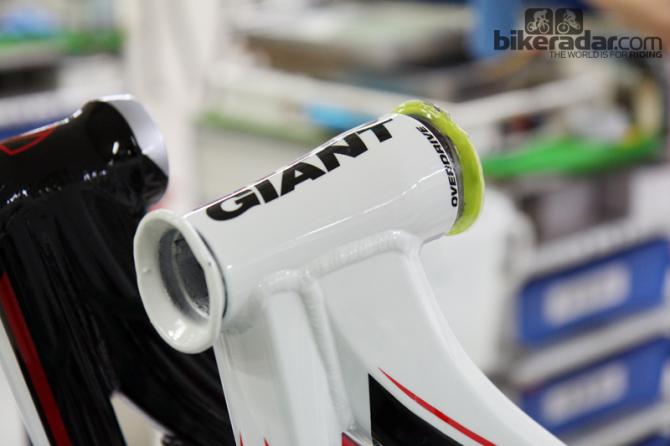
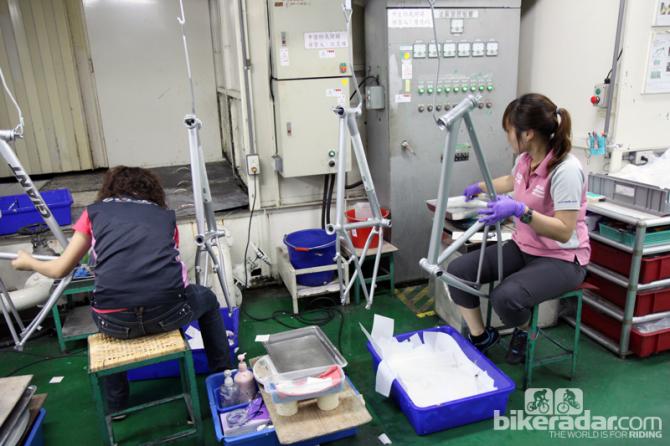
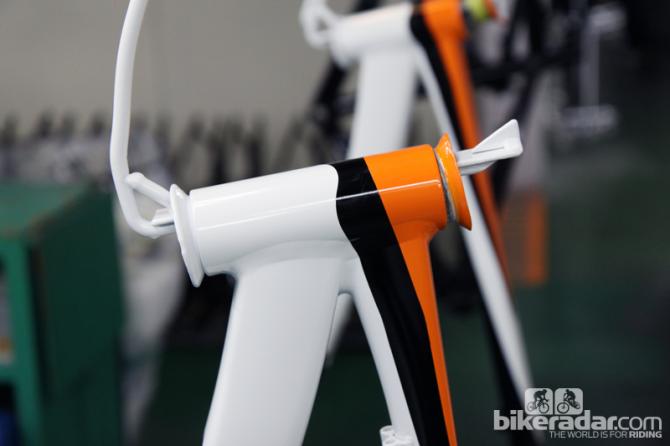
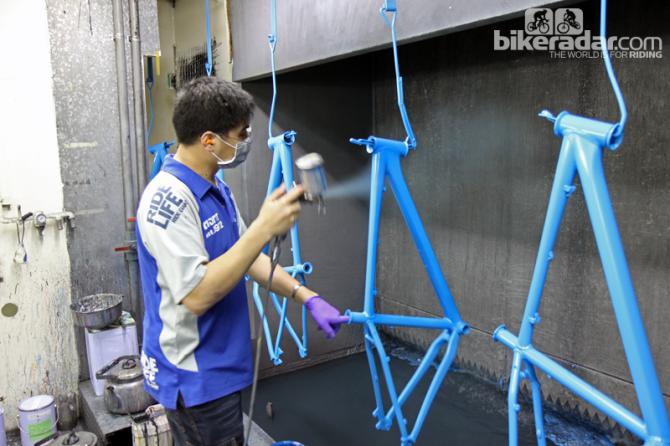
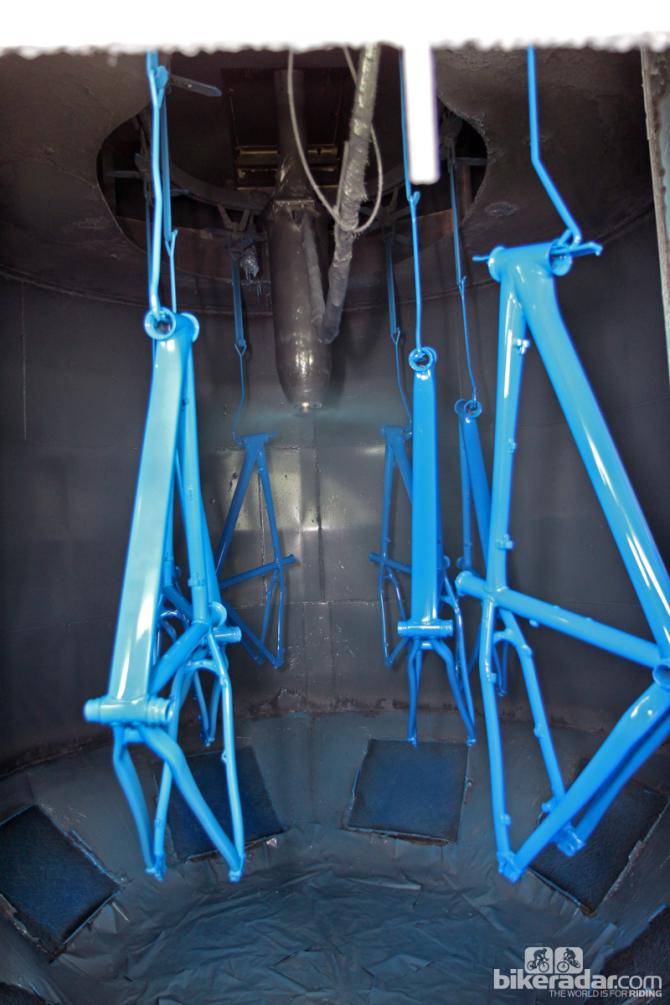
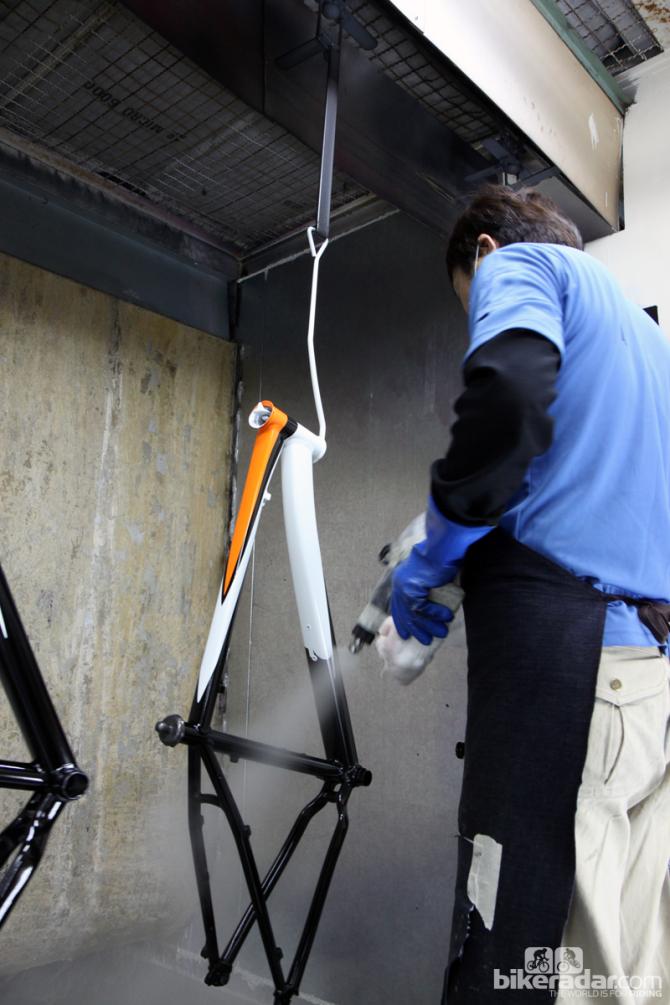
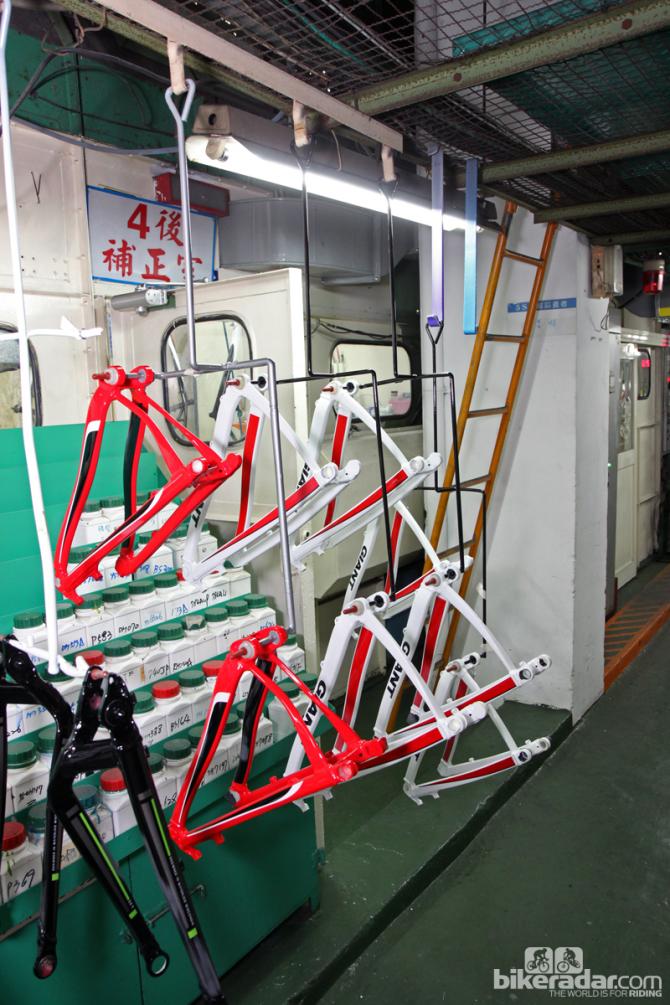
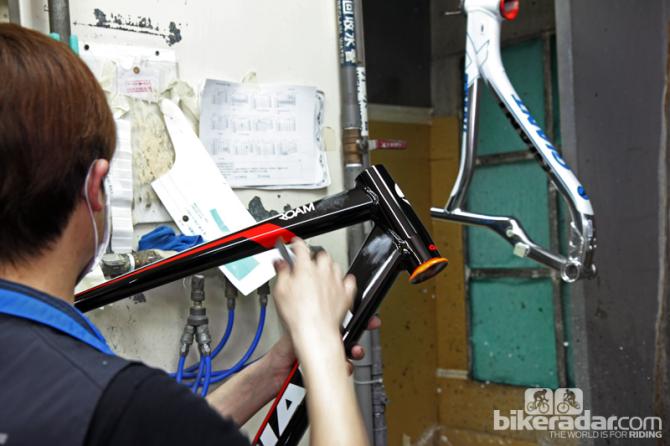
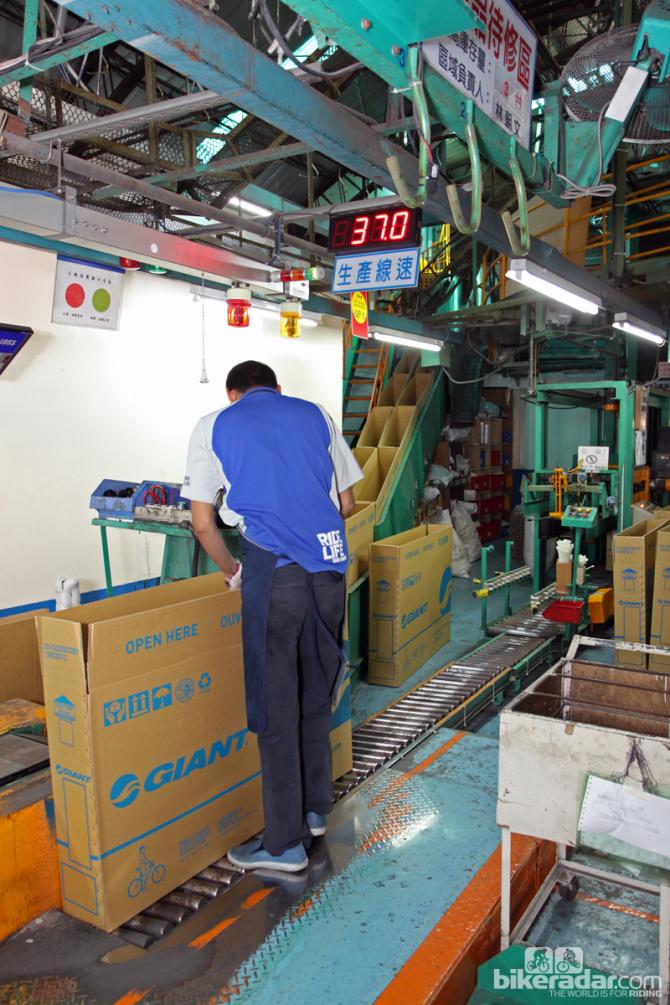
This article first appeared on BikeRadar.
In parts 1-3 of this exclusive four-part series, we showed you how Giant builds its aluminum and carbon fiber frames from raw molten ore and dry fiber all the way to complete chassis. Now it's time to wrap everything up – literally – with paint and decals, and also give you a look at how workers install and adjust components on those framesets in record time.
Giant builds an incredible number of bikes each year (about 6.3 million in 2012) and with virtually no exception, every one of them gets painted to some degree. Not surprisingly then, the company tends to stick with relatively straightforward paint schemes and relies on a highly efficient process to get everything coated.
Once they're ready for paint, frames in Giant's enormous factory in Taichung, Taiwan are transported via an intricate network of moving hooks. Anywhere you stand on the factory floor, all you need to do is look up to see the action going on behind the scenes.
In most cases, frames arrive in the painting area and get a fresh coat of primer that's automatically applied and then checked by hand – and touched up, if necessary. Solid colors are similarly sprayed through an automated process that helps ensure even coverage and minimizes waste.
Once the paint has been baked and dried, it's off to the decal room – an enviably quiet and peaceful place to be as compared to the painting areas. Overhead computer screens above each workstation show the technicians where each decal is supposed to go. Decals are applied using a wet transfer method that allows for some repositioning once they're laid on to the frame surface. Small squeegees are used to push out the underlying water, which also helps eliminate air bubbles.
After the decals are applied, the frames pay another visit to the paint area for clearcloating. Multi-part frames – like full-suspension mountain bikes – are assembled in yet another area and then it's off to the assembly area.
Get The Leadout Newsletter
The latest race content, interviews, features, reviews and expert buying guides, direct to your inbox!
Giant builds its complete bikes in a way that you're unlikely to see in any local shop. First and foremost, frames are positioned upside down, mounted on padded posted that are inserted into the seat tube. In this way, workers have complete access to every part of the frame (and can spin it around as needed) without creating any risk of marring the finish.
Parts are installed in what most would perceive to be a logical order. Headsets, forks, stems, and bottom brackets come first, followed by cranks, brake calipers, and derailleurs.
Wheels are built just off the assembly line using a mix of hand labor and automated machinery. Bare hubs are actually by hand – and from what we saw, the workers are exceedingly good at it, loading up nearly entire hub flanges with one handful of spokes. Spokes are laced by hand, too, but the actual process of attaching them to the rim is done by machine.
Another small army of machines made by Holland Mechanics – the leader in the industry – takes care of truing and tensioning with incredible speed. We watched as one 32-hole wheel was tensioned and trued to within +/-0.8mm in just over 40 seconds.
After the wheels are completed, rim strips, tires, tubes, cassettes, and disc rotors are installed as needed depending on the intended bike model. Complete wheelsets are then sent overhead by another set of moving hooks back to the assembly line where they're installed on the frames.
Handlebar assemblies are also built separately with all of the controls, grips, and handlebar tape installed before meeting up with the rest of the bike. Cable housing and brake hose lengths are predetermined based on bike model and size, too, so there's no guesswork later on that can slow down the process.
Workers can finally finish everything up once all of the subassemblies are in place. Interestingly, though, the handlebars are never actually bolted into the stems. Instead, they're hung from brackets that allow the workers to connect all of the cables and hoses. Even intricate brake and derailleur adjustments are done with the controls essentially hanging in free space – and with the bike still perched upside down.
Nevertheless, it all still gets done, and very quickly at that.
At the end of the line, the last few pieces of packing material are installed, the bars and front wheels are securely attached to the rest of the bike, and it's all fed into a cardboard box that's then automatically glued shut.
Finally, that box gets labeled and transported via elevator to a warehouse where it's stored and processed for shipment.
And there you have it – how to build carbon fiber and aluminum bikes in four easy steps. Sounds easy, right?
See also: part one, part two, and part three of the series.